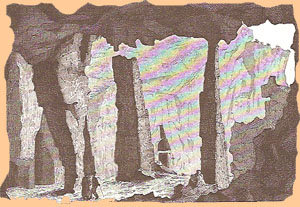 |
Origins of Bouldering |
 |
Origins of Bouldering |
Early
Bouldering in
Germany and the Dolomites |
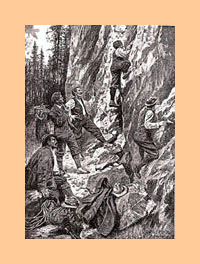 Bergsport und Kletterschulen Illustrierte Zeitung (1909) Sketch by Ernst Platz |
| In Germany
, Klettergarten
, or practice areas, have existed for more than a century. Undoubtedly, bouldering existed as a
training technique for longer climbs, but documentation is
scarce. There were too many serious, accessible climbs to be done in and around the Alps for bouldering to attain the popularity it did in Great Britain. In Germany, to a greater extent than in England, boldness, in addition to difficulty, was a central component of the climbing experience. Georg Winkler, a Munich high school student, pushed himself on solo climbs, dying while attempting the Weisshorn in that manner at the age of 18 in 1888. A little later, Dr. Paul Preuss - seen here on the right - carrying on that tradition, died while attempting a solo ascent of Manndlkogen. He was 27 at the time - the year was 1913. 'Practice climbing' on small rocks probably seemed relatively unimportant. Hans Fiechtl, who developed the prototype of the steel piton with integral ring about 1909 is seen here performing what appears to be a bouldering move. German bouldering, in its modern guise, seems to have been largely the result of the efforts of Wolfgang 'Flipper' Fietz, who established bouldering problems there in the late 1970s. He is seen here bouldering at Fontainebleau. I met a German climber in Chicago in 1958 who apparently had known Hermann Buhl, and he told me of a traverse route just above the ground, in an area near Munich or Innsbruck, that only Buhl could do. He said the critical handhold was "the thickness of a matchstick!". This area may have been the Isartal , mentioned by Joe Stettner to Jack Gorby, the author of The Stettner Way , or, more likely, the Hottinger Outcrop near Innsbruck. Buhl in Lonely Challenge had this to say about training exercises he did in 1940 - they sound a lot like bouldering: ". . . I got up at five every morning and hurried to the Hottinger Outcrop, Innsbruck's Climbing nursery . . . I soon knew every hand and foothold by heart. Things which seemed impossible at the outset in rubbers later became possible in boots with smooth leather soles . . . I went up and down, up and down, time and again, like a lift. All this of course only a few feet above safe ground; but the important part was that my fingers were getting trained." |
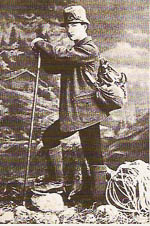 Georg Winkler at age 17 1870 - 1888 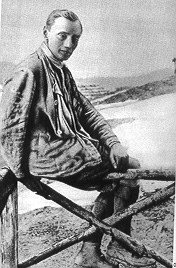 Dr. Paul Preuss 1886-1913 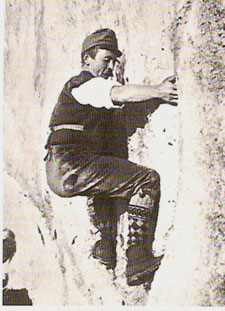 Hans Fiechtl Bouldering ca 1910 Wolfgang 'Flipper' Fietz Photo T. Ballenberger 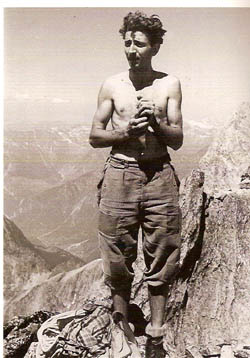 Hermann Buhl 1924 - 1957 |
I learned to do a one-finger, one-arm pullup in 1959 because this same German climber told me Buhl could do one. But I was never able to verify this claim. However, I've recently learned from Kerwin Klein that in the South Tyrol - homeland for Buhl - there was an old drinking game called Fingerhakeln or Finger-fighting, with origins well back in the 19th century, in which contestants locked middle fingers across a table, then tried to pull each other across. According to one 1878 account "One very frequently sees, in Tyrol, men with fingers bent nearly double on the right hand". Can it be that this enviable muscle-trick, a threshhold some serious boulderers feel they must cross, derives from a drunken farmers' game? Photo - Fingerhakeln, Berge und Heimat, Luis Trenker Berlin 1937 |
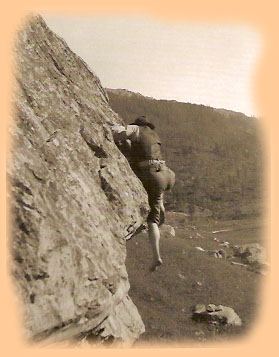 |
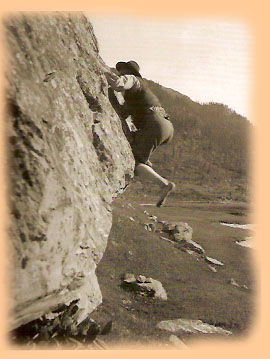 |
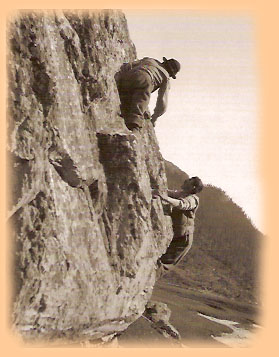 |
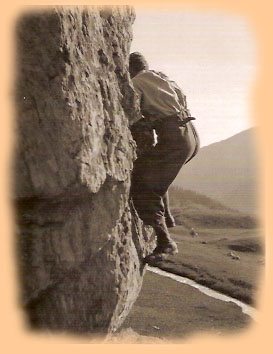 |
Bouldering in the Dolomites ca 1890 Photos by Guido Rey |